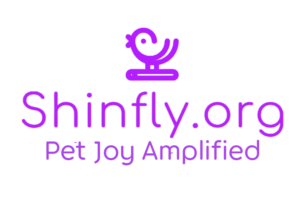A Harmonious Flock
An Interactive Guide to Introducing New Pet Birds
The Foundation of a Flourishing Flock
A successful introduction is built on a foundation of safety and patience. These universal steps are non-negotiable for any species and are designed to protect the health and well-being of both your current and new birds. This methodical approach minimizes stress and sets the stage for a peaceful, integrated flock.
1 Quarantine & Acclimatization (Min. 21 Days)
This is the most critical step. Keep the new bird in a separate room to prevent the spread of potential diseases. This period allows you to monitor for any signs of illness and lets the birds get used to each other’s sounds from a safe distance. An avian vet check-up is highly recommended.
2 Distant Socialization
After quarantine, place the cages in the same room but far enough apart that the birds cannot touch. This allows them to see and hear each other directly. Look for calm, curious behaviors. Swapping toys or perches can help them get used to each other’s scent.
3 Supervised Playtime in Neutral Territory
Never introduce birds in an existing cage. Use a neutral space, like a play stand or a separate room, for their first face-to-face interactions. Keep sessions short and always supervised, watching for any signs of aggression. Provide plenty of toys and treats to encourage positive associations.
4 Gradual Cage Integration
Only after many successful playtimes, consider housing them together. Thoroughly clean and rearrange the main cage to “reset” the territory. Ensure the cage is large enough for all birds and add multiple food and water stations to prevent competition. Monitor them closely for the first 24-48 hours.
Budgies: The Community Builders
Budgies are highly social and generally thrive in a flock. They are often receptive to new companions, but the standard introduction process is still essential. They communicate interest with a gentle, rolling “babble.”
Key Considerations:
- Flock Dynamics: Avoid keeping three budgies, as one may be excluded. A pair or a group of four or more often creates a more balanced social structure.
- Cage Type: Budgies are active flyers and benefit from cages that are wider than they are tall (flight cages) to allow for horizontal movement.
- Temperament: Generally peaceful, but individual personalities vary. Watch for signs of bullying, especially around food.
Cockatiels: The Affectionate Companions
Cockatiels form strong social bonds. A single cockatiel often bonds intensely with its owner. Introducing a second bird can shift this dynamic, providing your pet with valuable avian companionship, which can reduce stress and prevent behavioral issues like feather plucking.
Key Considerations:
- Owner Bond: Be prepared for your bird’s primary bond to shift towards its new companion. This is a healthy, natural development.
- Sexing: To avoid excessive egg-laying and potential health issues, consider a same-sex pair if you are not planning to breed.
- Night Frights: Cockatiels are prone to night terrors. A nightlight or partially covering the cage can help them feel more secure.
Lovebirds: The Bold & Territorial
CRITICAL WARNING: Despite their name, lovebirds can be extremely aggressive and territorial, especially towards other species. Their powerful beaks can cause severe injury.
Key Considerations:
- Species Incompatibility: NEVER house a lovebird with a budgie, cockatiel, or any other species. The risk of fatal injury is extremely high.
- Introduction: Introductions should only be attempted with other lovebirds, following the 4-step process with extreme caution and supervision.
- Territorial Nature: They are highly possessive of their cage. All out-of-cage interactions with other birds must be constantly and closely monitored.
Habitat & Cage Setup
A proper environment is crucial for a bird’s physical and mental health. This chart compares the recommended minimum cage volumes for a single bird versus a pair. A larger cage is always better and essential for reducing stress and territorial disputes in a multi-bird household.
Decoding Bird Body Language
Understanding your bird’s signals is key to a safe introduction. Learn to distinguish between happy, curious behaviors and signs of stress or aggression.
Positive Signs (Contentment)
Beak Grinding, Soft Chattering, Singing/Whistling, Tail Wagging, Head Bowing for scratches.
Neutral/Excited Signs (Pay Attention)
Pupil Flashing (can be excitement or aggression), Wing Flapping in place, Preening.
Warning Signs (Aggression/Fear)
Hissing, Ruffled Feathers, Fanned Tail, Beak Clicking, Lunging/Snapping. Give the bird space immediately.


